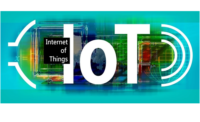A Primer on the Remote Capabilities of the Internet of Things

When we look at the language people use to describe remote capabilities and the internet of things (IoT), it’s easy to see why the topic can be confusing.
Videojet (videojet.com) recently surveyed engineers and plant managers in North America about both their understanding of remote capabilities and the benefits of using them. Our survey found that only 12 of 117 respondents were very aware of the benefits of remote capabilities. Seventy-nine out of 117 respondents were only somewhat familiar, while 23 respondents were not familiar at all.
The results point to the need to clarify what remote capabilities are and how they can help keep lines and plants running more smoothly and predictably by today’s standards and the growing trend toward the IoT.
Defining Remote Capabilities
For plant managers, there is a significant difference between remote monitoring and remote service that can impact the time it takes to recover from a downtime incident:
Remote monitoring allows your equipment solution provider to see what might be causing downtime using some IoT sensors. Then, using email or phone, this partner can remotely instruct you on a solution that you can implement yourself. If that doesn’t work, the partner can make a service call with important insights already in hand.
Remote service, on the other hand, is a much more comprehensive remote capability. Beyond sensor capabilities, remote service puts your partner squarely into your machine, like a VPN system, unlocking access with full privileges. Remote service may allow your partner to address the issue for you, while teaching you how to optimize for the future. Without visiting your site, experts can support you by performing 24/7 analytics and real-time repair, shortening downtime and eliminating a significant percentage of service calls.
You might be benefiting from remote service in your everyday life already. The General Motors OnStar service is a perfect example. Your car doesn’t just relay information about critical events to the service representative; you can give OnStar’s service representatives the power to actually slow your car down or block remote ignition if it’s stolen. OnStar users voluntarily give this privilege to OnStar in recognition of its value in an emergency.
A Difference of Service Level
While remote service may initially appear to be a “nice to have” vs. “must have” service, it can save you money, not only over the life of the machine through more up-time, but also up-front, in your contract.
Videojet discovered that 70 percent of our customers’ printer service visits required no parts replacement, which suggested user error, setup error, parameter error or deficiency in cleaning or in process. Many of these issues can be identified and rectified quickly through IoT-enabled remote service, without an on-site service call, resulting in cost savings for both you and your partner.
Remote service gives you and your partner access to more data; it also makes it easier for the partner to see the bigger picture of a downtime event or fault condition, supplying more detail and depth to identify corrective action. By combining your machine’s always-available data with event logs, the partner can parse out what’s happening in real time, more insightfully than by retroactively using your observational data that you’ve manually collected or estimated, which can slow down the process.
If you’ve noticed a gap between your machine’s performance and your expectations, it might relate to the limitations of mere remote monitoring. Remote monitoring helps shorten response times during periods of trouble or reduced operation, but the uptime results aren’t sustainable. This is because during the remote repair process, your partner either has to make a field service visit or must turn over control to your operators to handle, which can prove difficult given the wide variety of machines in a packaging line and the expertise required to maintain them. Hence, the prevalence of service calls for problems that could otherwise be resolved remotely. Without actual control of the machine, your partner is like a mechanic watching a live video feed of the check engine light blinking on your dashboard, but lacking any power to apply the expertise to fix the problem.
Remote service puts power back into the hands of your partner, leveraging the IoT more powerfully and directly addressing the most common root causes of downtime:
- Environmental or application factors, such as higher duty cycles than anticipated
- Training or experience gaps among employees, despite everyone’s best efforts.
- A lack of actionable data or the insufficient monitoring and analysis of data that’s been collected
It also gives the partner something else: motivation to have more “skin in the game.” With more knowledge and access to your system, a partner can make stronger recommendations about performance and uptime, and can be more successful in resolving problems quickly and efficiently.
So by giving a modest amount of control to your partner, you can actually gain better control over your technology, your productivity, and your bottom line.
Looking for a reprint of this article?
From high-res PDFs to custom plaques, order your copy today!







